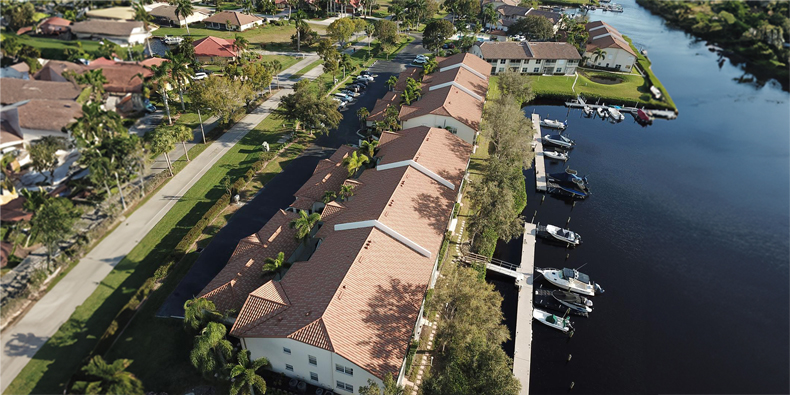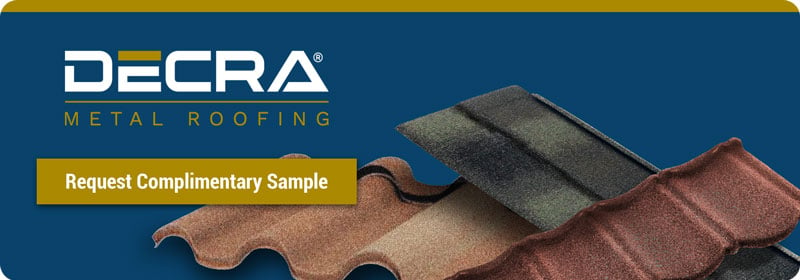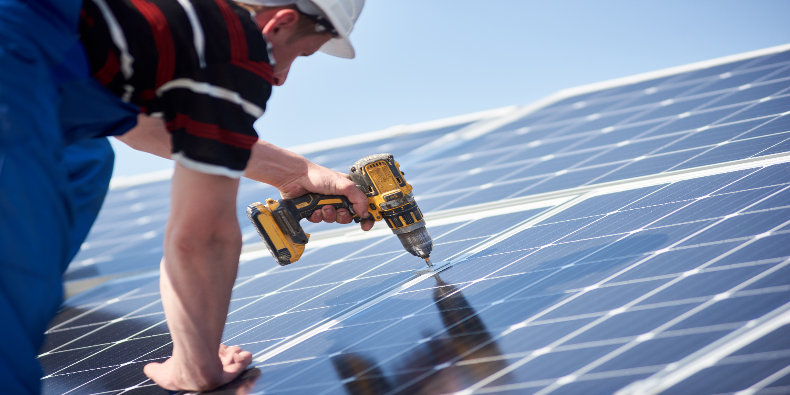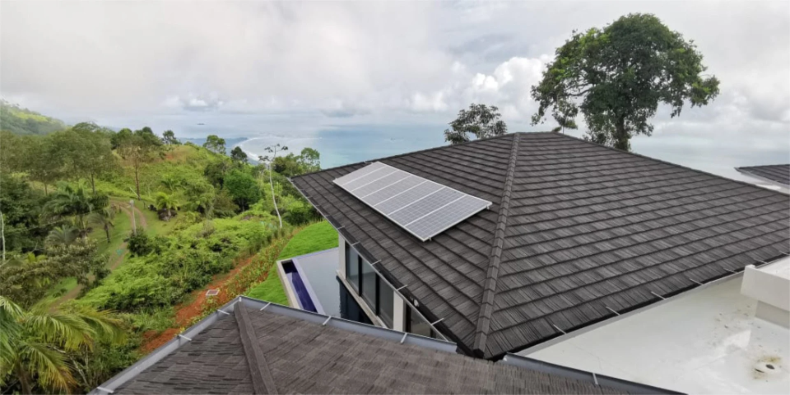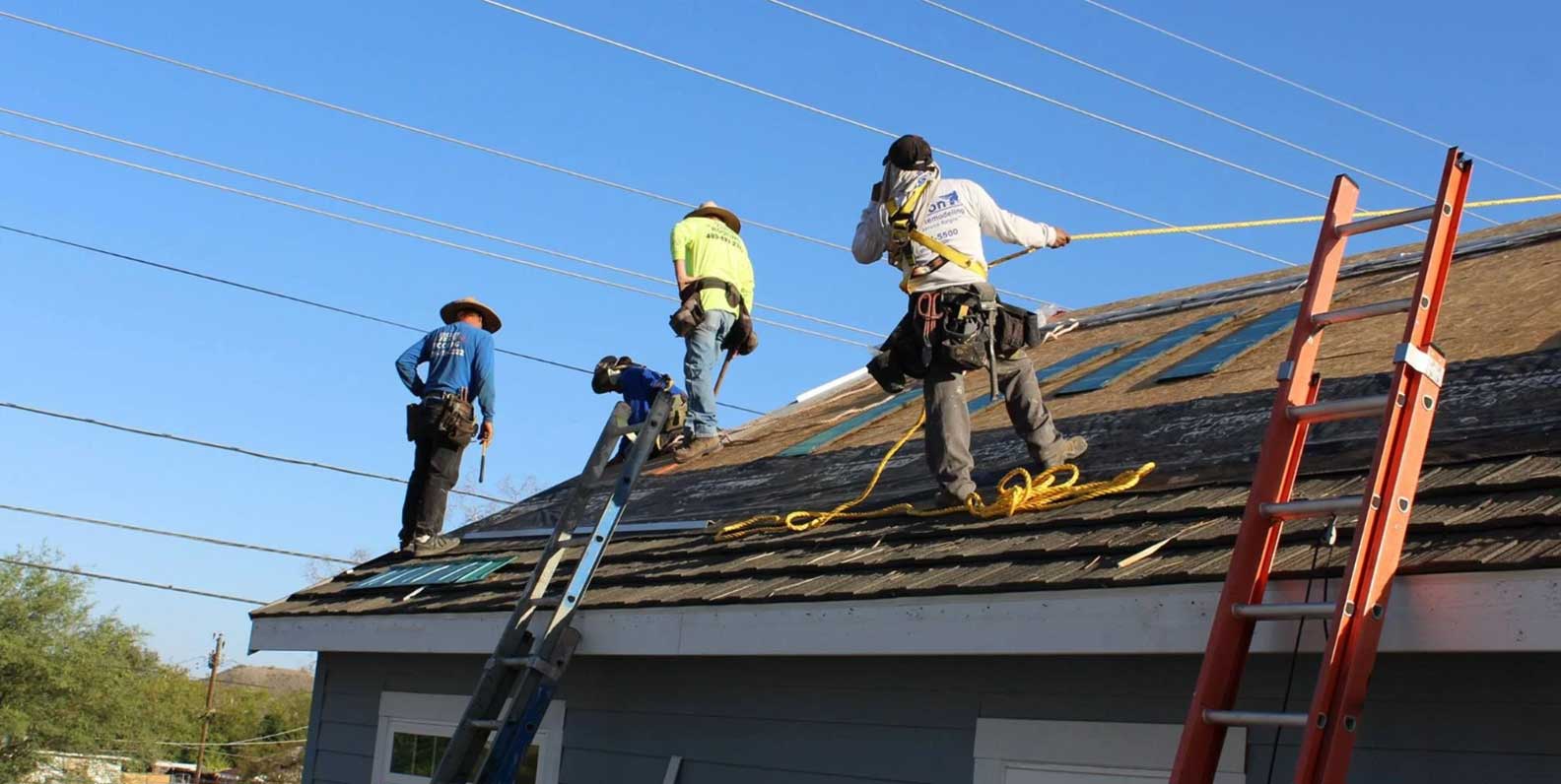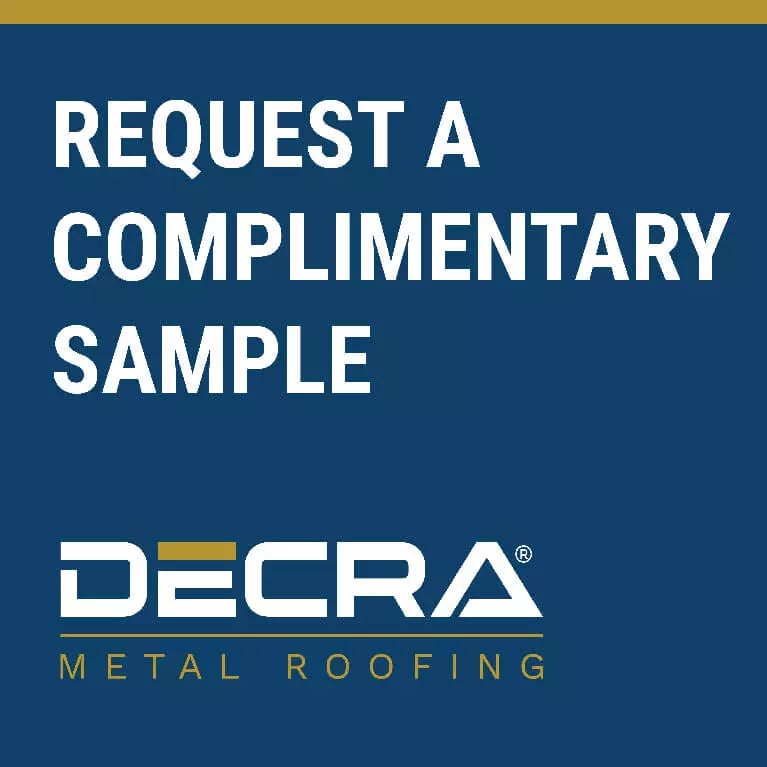Replacing a deteriorating or damaged roof is a major project, especially when it involves dozens or even hundreds of units in a condominium complex. For these communities, the responsibility for this decision typically falls to the Homeowners Association (HOA) or condo board, which oversees the maintenance of shared structures like the roof.
The process usually begins with the board identifying the need for replacement and consulting roofing professionals, and in some cases, an architect to evaluate the existing structure and recommend suitable materials. From there, the board selects potential roofing options based on several key factors: architectural aesthetics, longevity, durability, and cost. All choices must comply with the HOA’s governing documents (such as the CC&Rs) as well as local building codes and regulations.
To help HOA board members make an informed decision for their community, this guide covers key factors to consider when evaluating roofing materials, including:
- Aesthetics: Choosing roofing that aligns with the HOA’s architectural guidelines.
- Longevity and Durability: Selecting materials that can withstand the elements.
- Cost: Finding options that offer a strong return on investment.
Aesthetics
“There are several critical factors for HOAs to consider when re-roofing a complex, but aesthetics are at the top of the list. For a long time, I held the role of president of a condo association. Although many of the elderly residents placed a huge emphasis on cost, and others worried about timing, for the board, it was all about aesthetics.”- John Ross, former HOA president
When it comes to communities, aesthetics aren’t just a matter of personal taste. They’re a critical factor in maintaining property values and ensuring visual harmony across the entire complex. Because multiple units often share the same roofline or are part of a master-planned community, the appearance of the roof plays a major role in the overall curb appeal. A roof that clashes with the architectural style of the buildings can detract from the entire community’s appeal.
For this reason, many associations prioritize style and color when evaluating roofing materials. Most communities have CC&Rs in place that specify acceptable colors, finishes, and roofing styles to preserve a cohesive look. In some cases, the association may consult with an architect to ensure that the selected roofing material complements the original design intent of the complex or enhances its current appearance in a way that aligns with community standards.
Some communities even evaluate roofing materials based on their gloss level. High-gloss or highly reflective finishes can create unwanted glare, especially in sunny climates or areas with multiple rooflines visible from upper-level units. As a result, many HOAs opt for roofing materials with a low-gloss or matte finish to limit shine and maintain a more natural aesthetic.
Visual appeal alone isn’t enough, though. Some roofing materials may fit the aesthetic, but fall short when it comes to performance. For example, clay tiles are a perfect fit for Spanish or Mediterranean-style communities, but they’re also extremely heavy and fragile, often cracking under routine maintenance. Similarly, wood shake roofs may suit rustic designs but require frequent upkeep and pose fire risks in wildfire-prone regions. Stone-coated metal delivers the same architectural charm as these traditional materials but without the maintenance headaches or structural concerns.
Color options are also wide-ranging, allowing HOAs to choose shades and finishes that blend seamlessly with the building exteriors and surrounding landscape. Choosing the right roofing style, color, and finish helps reinforce the community’s identity and supports long-term property values.
Longevity and Durability
“One of the key concerns for HOAs in roofing for condo complexes is longevity and durability. It's not just about maintaining the aesthetic appeal of the building, but also ensuring the structure is secure and can withstand the test of time and weather conditions. That’s why investment in both quality materials and professional installation is important.”- Kelvine Ferrer of Daisy Management
So, what type of roofing delivers on both longevity and durability? Stone-coated metal roofing. More on that below.
Longevity
When evaluating roofing materials for a complex, longevity goes beyond just how many years the roof will last. It’s about how well it performs throughout its lifespan. Metal roofing, especially stone-coated steel, is one of the most long-lasting options on the market, with a lifespan of 40 to 80 years. That’s significantly longer than traditional roofing materials like asphalt shingles, which often need replacement after just 12 to 20 years and even sooner in regions with extreme weather or intense sun exposure.
Unlike lower-cost alternatives, metal roofs are engineered for long-term performance with minimal maintenance. Investing in a metal roof means fewer repairs and replacements over time, making it a smart choice for HOAs.
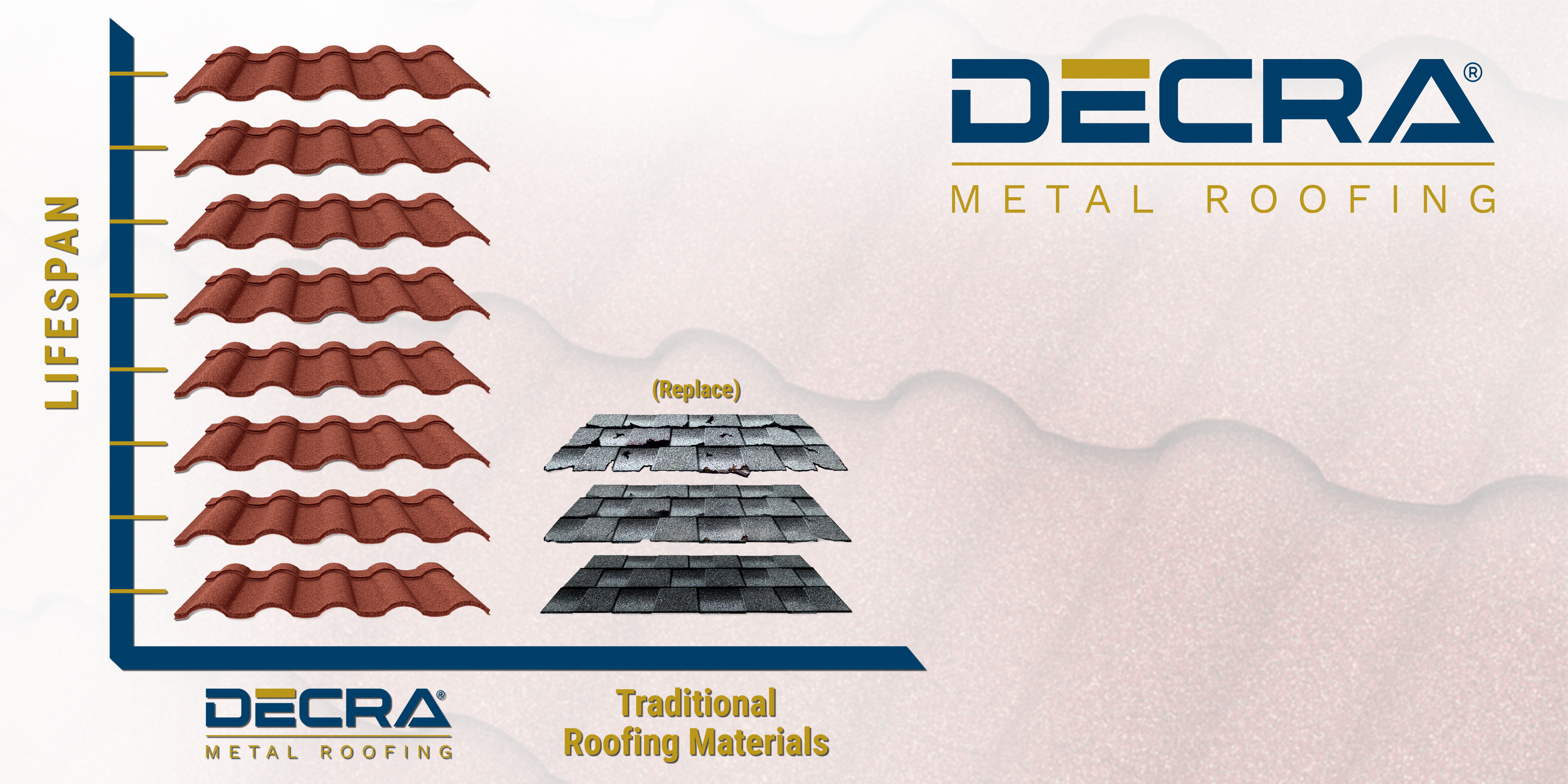
>>>Related Resource: What Roof Lasts the Longest?
Durability
Metal roofing is known for its exceptional durability across a wide range of climates and conditions. Whether your complex is located in a coastal area or snowy region, metal roofing offers tested and proven protection.
DECRA provides a Lifetime Limited Warranty for all of its products, giving condo associations peace of mind with one of the most comprehensive warranties in the industry. Coverage includes wind speeds up to 120 miles per hour and hailstones up to 2.5 inches in diameter. But the benefits don’t stop there. DECRA roofing also holds the highest ratings for both hail and fire resistance, and is approved for use in Florida’s High-Velocity Hurricane Zones (HVHZs), which is widely regarded as the national benchmark for wind performance.
Metal roofing also offers long-term performance in a variety of climates. It resists rust and corrosion in humid, coastal environments and stands up to freeze-thaw cycles in snowy regions. Its lightweight, non-porous design helps prevent ice dams and minimizes structural stress from heavy snow accumulation.
>>>Related Resource: What is the Strongest Type of Roof?
Cost
When choosing a roofing material for your community, it’s important to look beyond just the upfront cost. While price matters, so do quality, maintenance, and the roof’s impact on property values over time.
Here are four key areas to consider when weighing the true value of a roofing material:
Initial Costs
HOAs must factor in more than just the initial cost of installation. For instance, cheap roofing materials often lead to frequent repairs and have a shorter life expectancy which will cost more in the long run. In addition to the initial cost of installation, be sure to factor in the roof’s lifespan, maintenance requirements, and the manufacturer’s warranty.
High-quality roofing products are backed up by a comprehensive lifetime limited warranty that comes standard with their products. In contrast, lower-quality roofing may charge extra for warranties, offer them on a prorated basis, or not provide warranties at all. This difference can be a telling indicator of a roofing product's overall quality and long-term reliability.
Maintenance
Roof maintenance typically involves regular inspections to extend the roof’s lifespan and prevent costly repairs. Some materials require more maintenance and upkeep than others.
For example, wood is highly vulnerable to rot, pests, and fire, making it one of the most maintenance-intensive roofing options. Asphalt is affordable but less durable, requiring frequent attention to avoid leaks and premature aging from algae and moss growth, granule loss, and curled or cracked shingles from heavy storms. While clay and concrete tiles last a long time, they can crack under impact or stress because they’re very brittle.
Stone-coated metal roofing is extremely durable, resistant to pests, fire, and extreme weather, and usually needs minimal upkeep.
Property Value
The roofing material you choose can have a direct impact on the curb appeal and property value of your community. A high-quality stone-coated metal roof can increase property values by up to six percent compared to communities with asphalt-shingled roofs.
Energy Savings and Insurance Discounts
Energy-efficient roofing materials like metal can save property owners as much as 25% on heating and cooling costs. Metal roofs are also an excellent base for solar panels, making them a smart long-term choice for communities exploring renewable energy options.
Additionally, many insurance companies offer policy discounts up to 35% due to the superior weather resistance of metal roofing. In fact, Progressive calls out on their website that “your homeowners' insurance may cost less if you have a newer roof made of more durable materials, like metal.”
>>>Related Resource: Do Metal Roofs Increase Home Value?
Why Condo Associations Choose DECRA
Many traditional roofing materials, like asphalt shingles, wood shakes, and clay tiles, may perform well in one area but fall short in others. DECRA provides a balanced combination of strength and style, making it a trusted choice for condominium communities across the country.
Whether your HOA wants to boost curb appeal, minimize maintenance costs, or meet strict insurance and building code requirements, DECRA’s stone-coated metal roofing delivers a proven solution. Backed by a Lifetime Limited Warranty and engineered to withstand everything from hurricanes to hailstorms, DECRA offers peace of mind and long-term value without sacrificing aesthetics.
Ready to see and feel the DECRA difference? Request a complimentary sample for your community today.

